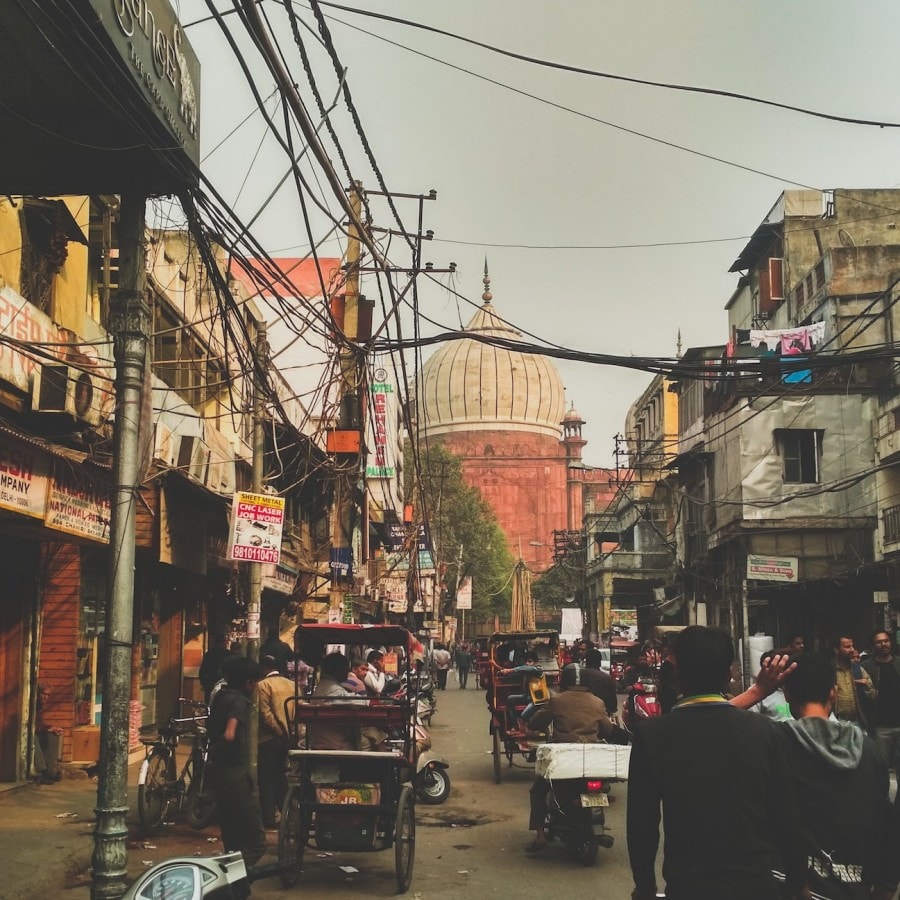Delhi

National Geographic picked in 2009
Country : India
Currency : INR(Rupee)
Big Mac Index : 2.38
Travel Safety : Moderate Risk
Delhi, the capital of India, is a city that is steeped in history and culture. With a population of over 20 million people, it is one of the most densely populated cities in the world. The city is divided into two parts, Old Delhi and New Delhi. Old Delhi is the historic part of the city with narrow streets and ancient buildings while New Delhi is the modern developed part of the city. Getting to there: Delhi is well connected to other major cities in India and the world. The city has an international airport, Indira Gandhi International Airport which is located in the southwestern part of the city. The airport is well-connected to the city center by taxis, buses and the Delhi Metro. The Delhi Metro is one of the best ways to get around the city and it connects most of the major tourist attractions in Delhi. Things to see and do: - Red Fort: The Red Fort is a UNESCO World Heritage site. Built in 1638, the fort was the residence of the Mughal emperors for over 200 years. The fort has several magnificent buildings, including the Diwan-i-Am, Diwan-i-Khas and the Rang Mahal. - Qutub Minar: Another UNESCO World Heritage site in Delhi. The minaret is 73 meters tall and was built in the 12th century. The Qutub Minar is a great example of Indo-Islamic architecture and is surrounded by several other historical structures. - India Gate: The India Gate is a war memorial located in the heart of the city. The structure was built in memory of the Indian soldiers who lost their lives during World War I. The India Gate is a popular spot for picnics and evening strolls. - Lotus Temple: The Lotus Temple is a unique structure that is shaped like a lotus flower. The temple is a Bahá'í House of Worship and is open to people of all religions. The Lotus Temple is a popular spot for meditation and relaxation. - Chandni Chowk: The oldest and busiest markets in Delhi. The market is famous for its street food, jewelry, and textiles. A visit to Chandni Chowk is a must for anyone who wants to experience the vibrant and chaotic culture of Delhi. - Humayun's Tomb: Another UNESCO World Heritage site in Delhi. The tomb is the final resting place of the Mughal emperor Humayun and was built in the 16th century. The tomb is a great example of Mughal architecture and is surrounded by beautiful gardens. - Akshardham Temple: A magnificent temple complex that is dedicated to Swaminarayan. The temple complex is located on the banks of the Yamuna River and is known for its beautiful architecture and intricate carvings. When to visit: The best time to visit Delhi is from October to March when the weather is pleasant and dry. The temperature during this time ranges from 10°C to 25°C, making it the perfect time to explore the city. The summer months from April to June, can be extremely hot and humid, with temperatures reaching as high as 45°C. The monsoon season from July to September, can be unpredictable, with heavy rains and occasional floods. Tips: - Be careful when travelling by auto-rickshaw, as they can sometimes overcharge tourists. - Be prepared for the heat and pollution during the summer months. - Be aware of your surroundings when walking around the city, especially in crowded areas. - Be sure to try the local food, as Delhi is known for its delicious street food.
Photo - Unsplash: Aquib Akhter